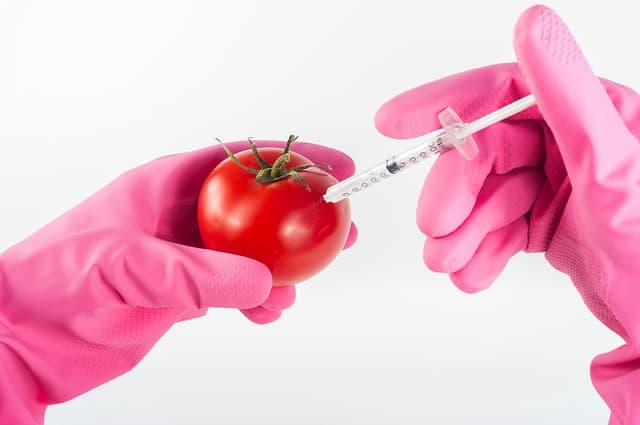Genetically modified organisms (GMOs) are those whose genome has been artificially altered in a lab to support the expression of wanted physiological characteristics or the growth of wanted organic products.
In the conservative production of livestock, agricultural farming, and breeding of pets, the technique has been used for a long time in the custom of selecting breeding individuals from a group to give out offspring with the desired characteristics.
The entire process of artificial alteration is termed as genetic engineering, and it’s habitually aimed at producing combinations of bacteria, viruses, and animal genes that do not occur in nature or in manners that contradict the conventional crossbreeding methods.
Various Pros of Genetically Modified Organisms (GMOs)
1. GMOs advance the quality of grown food
One of the advantages of genetically modified foodstuffs is that they can be changed to have a longer-lasting life with the aim of limiting the wastage of food.
This can be done by creating stronger colors, eliminating seeds, or having the plant get more adjusting for it to withstand harsh climatic changes.
Plus, a lot of foodstuffs that have been advanced have better nutrient percentages, such as protein and calcium, which generally improves the quality of the food.
2. GMOs are easier to cultivate
Genetically modified foods can also be manipulated to grow in specified and problematic surroundings that their non-GMO counterparts can’t. This could be done by creating crops that are more resistant to pests and those that have improved tolerance to numerous chemicals such as herbicides.
3. They boost the yields that an individual can generate on existing lands
Research shows that by 2050, the world population will have skyrocketed to about 10 billion, meaning that people will require more food for consumption from the existing lands.
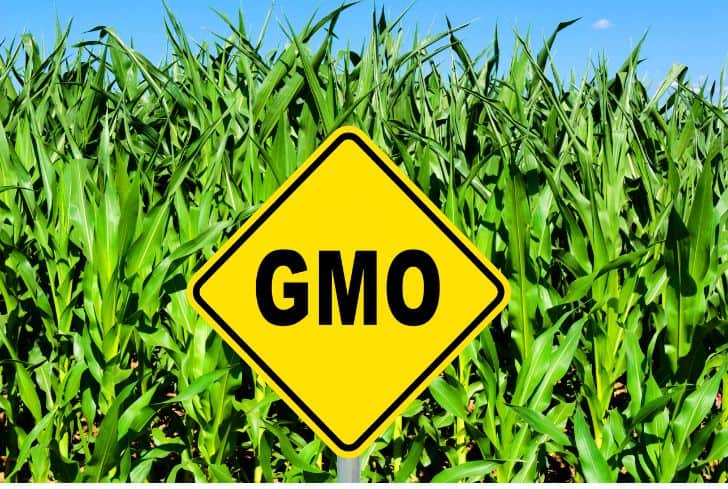
In a bid to hold up the anticipated increase, GMOs offer the possibility with no need to alter food pricing. GMO proponents claim it is a solution to the world’s future food security, and that’s because modified crops can yield higher produce from the same cultivated lands.
In some occurrences, the yield can possibly increase after transitioning to GMO from traditional crops, thus making it possible to meet the food demands that the next generations will need.
4. GMOs can be transported to inaccessible regions of the world
Currently, food production in the world is 17% more than is required for the population. Sadly, there are about 1 billion people who sleep on empty stomachs each night.
That shows the real problem isn’t in food availability, but rather in the means of dispensing it to the countryside where individuals have little quantities of food. The time it takes to reach such areas is sufficient to get spoiled before consumption.
Now, genetically modifying this food lengthens its natural life and improves its resilience, allowing it to be transported over longer distances without wastage or going bad.
5. Chemical usage on GMO crops is lesser compared to other crops.
Based on a study conducted by PG Economics to measure the quantity of pesticide on cotton that had been genetically modified from 1996-2011, it was discovered that there had been a 6% decline in the amount of herbicides used compared to those that had not been modified.
That’s to say, by genetically modifying crops, farmers will need to spray less, which is generally essential for the quality and safety of the food.
6. GMOs can preserve energy, soil, and water
Food can be cultivated in regions with less rainfall and no irrigation with appropriate genetic alterations. This allows our food distribution network to make less of an impact on the environment.
Moreover, the crops have excellent resistance to weeds, pests, and diseases with a continuous yield, making it easier to plan for food sources and storage for a bigger populace.
7. It protects crops from extinction
Most foods that people consume nowadays are products of a sole original source. For instance, each naval orange is basically a clone of a single original tree that was attached to create more trees.
Not having genetic disparities puts the crop at risk should a virus or microorganisms be able to attack the fundamental genetic makeup of the crop. For example, the Hawaiian Rainbow Papaya was genetically engineered; thus, its industry was saved.
Various Cons of Genetically Modified Organisms (GMOs)
1. They might contribute to a rise in allergic reactions
Studies have shown that food-related allergic reactions in kids have risen from 3% to 5% in the last decade. Even though there is no proof that GMOs are to blame, the thought that they could be playing a part has stuck in people’s minds causing them to keep away from genetically modified food.
2. Genetic food can prompt allergic reactions from different foods
GMOs containing bodybuilding nutrients from Brazil nuts were discovered to cause allergies in sensitive individuals. Thus, any proteins from other foodstuffs must have a listing as part of the components and be tested to find out their capability of causing allergies.
3. GMOs may contribute to antibiotic resistance
GMOs are mostly incorporated with antibiotic-resistant genes to make crops grow stronger. It is contemplated but not corroborated that the procedure could contribute to developing antibiotic-resistant bacteria.
4. Some research has linked GMOs to cancer
Research initially published in 2013 showed that herbicides found in Round-up tolerant crops led to the development of cancer in rats. The paper was later taken back by the first journal that published it for having unfounded or deceptive information; however, other journals have printed it since the withdrawal. Thus, many individuals have concluded that consuming modified corn could be dangerous to their health.
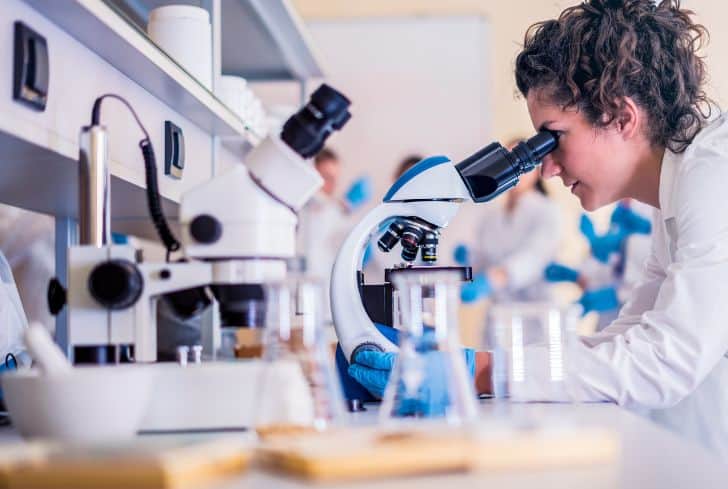
5. Very few companies are in charge of the GMO seed market
A lot of the negative energy surrounding GMOs tends to involve Monsanto. There are five other corporations, however, that, alongside Monsanto, are in charge of the GMO seed market. The companies include DuPont, Syngenta, Agrosciences, Dow, BASF, and Bayer.
The few companies mean a lack of diversity and competition in the GMO seed market, which can lead to homegenization of crops and higher seed prices, thus limiting access to GMO technology for smaller farmers.
6. Doesn’t impact herbicide resistance
Presently, there are 64 different sorts of weeds that have been verified to be resistant to atrazine, a type of chlorinated herbicide. This is regardless of the reality that not any of the weeds have been coupled with GMO crops to promote such resistance.
Various farmers in the Southeastern United States tend to lose up to half of their produce even when they have planted GMO crops to atrazine-resistant weeds.
7. Autonomous studies are restricted by organizations in control of GMOs
User concurrence with half of the leading manufacturers of GMO seeds forbids autonomous research of the finished good. It aids in protecting the payments they get to make when farmers get to reap yield by using their seeds.
Because the seeds are seen as the property of the corporation, even the unintentional growth of a GMO crop can cause the necessity to reimburse the company.
8. GMO crops can contaminate other fields
Even though crops have been genetically modified, they still grow similarly to other crops, meaning that they still need pollination to produce the intended “fruit.”
The problem here is that bees — which act as an agent of pollination — get exposed to the genetic transformations occurring in the crop. That means the impacts of the modification extend beyond the crops, which obviously isn’t the original intent.
Plus, when cross-pollination happens, there is no result that can be predicted for both farms. But that only happens to crops that need cross-pollination and not those that rely on self-pollination like soybeans.
9. GMOs produce superbugs
When pesticides are applied to pests, a small number of them have a tendency to survive. Hence, the following generation becomes resilient to the chemical, meaning either more pesticides are required or a stronger one.
Putting a stronger chemical, the insects become even more resilient; this eventually leads to the growth of superbugs that decrease food provisions.
10. GMOs have the potential to affect animal protein
The huge majority of the main plants planted in the United States are genetically modified. Such crops are subsequently given to livestock as food. Consequently, this affects animal-based groceries.
Generally, GMO components can be traced in eggs, milk, seafood, and animal muscle tissues. In addition, honey can also contain components of GMOs because of bees pollinating genetically modified plants for production.
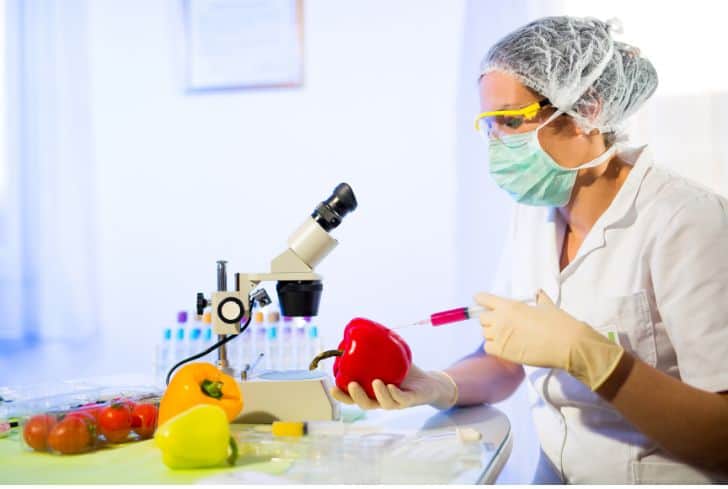
Regarding the advantages and the disadvantages of GMOs, as seen, there is a lot of disinformation as there is truth.
Even though GMOs are able to produce more food, they tend to cause digestive problems along the way. So it is essential to address the treatment of GMO seeds.
Also, farmers should be allowed to use GMO seeds that spread to their farms without fearing lawsuits. This would increase the profits gained from farming.
How Do Genetically Modified Organisms (GMO) Affect the Environment?
Genetic modification is a contentious issue. The early warnings of environmentalists about the negative impacts of genetically modified (GM) plants are being proven correct.
The following serious problems have been observed:
Herbicide-Tolerant Crops and Herbicide Use
Almost 100% of the GM crops grown in Canada – corn, soy, cotton, canola, and sugar beet – are engineered to be tolerant to a specific herbicide. Most are tolerant of multiple herbicides.
Glyphosate is the top pesticide ingredient sold in Canada, and its use tripled between 2005 and 2011. Between 1994 and 2016, herbicide sales in Canada increased by 199%.
The problem is that glyphosate has adverse effects on the environment. It modifies the soil microflora, which means that plants can’t get the nutrients they need to resist diseases.
Plus, data from the US and Latin America also shows that GM crops have increased herbicide use. In the US, scientist Charles Benbrook found that total pesticide use was 24% higher for GM crops than for non-GM crops by 2011.
The 2013 report “Soybean production in the Southern Come of the Americas: Update on Land and Pesticides Use” compiles and analyzes specific data on land and pesticide use in the main soybean-producing countries of the Southern Cone of South America: Argentina, Bolivia, Brazil, Paraguay, and Uruguay.
Insect-Resistant Crops and Pesticide Use
GM insect-resistant (Bt) crops are engineered to produce a toxin that makes the entire plant toxic to some insects, such as butterflies and beetles. In the US, Bt crops decreased the use of insecticides by 124 million pounds between 1996 and 2011.
However, the toxin produced by the plant may also have adverse environmental impacts. Bt crops simply change the way that pesticides are used, from sprayed on to built-in, and that means overally, GM crops in the US have increased pesticide use by 403 million pounds (183 million kgs).
Herbicide-Resistant Weeds
The increased use of specific herbicides with GM herbicide-tolerant crops resulted in the emergence and spread of herbicide-resistant (HR) weeds, or “superweeds” (in fact, there currently are 37 species of weeds that are tolerant to glyphosate around the world). These weeds develop resistance to certain herbicides when they are widely and frequently applied to them.
As herbicide use has increased, so has the number and range of herbicide-resistant weeds. GM crops have accelerated and entrenched this pattern because the introduction of herbicide-tolerant crops, particularly glyphosate-tolerant “Roundup Ready” crops, has meant that large areas of cropland are repeatedly sprayed with the same herbicide.
Herbicide-resistant weeds also present economic costs for farmers. In the US, weed management costs in infested fields are 50-100% higher per hectare than in those without glyphosate-resistant weeds.
Some weeds have developed resistance to multiple herbicides, making them even harder to control. The spread of HR weeds, in turn, drives up herbicide use, leading to a “pesticide treadmill” that has serious impacts on environmental and human health.
Superbugs
In May 2019, corn farmers in Canada observed that the European corn borer, an insect pest, has developed resistance to the genetically engineered (genetically modified or GM) trait designed to kill it.
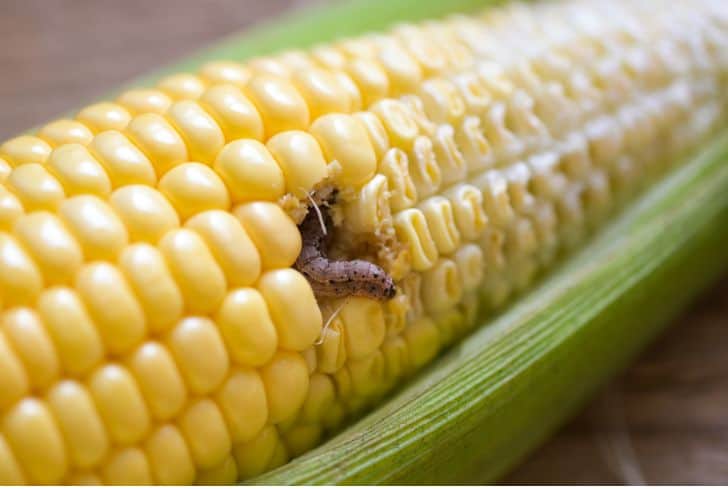
This is the first report in the world of the European corn borer (ECB) developing resistance to a genetically engineered trait used to confer insect resistance. It is also the first report in Canada of any insect pest developing resistance to a genetically engineered trait.
The development of resistance in other insect pests targeted by Bt (Bacillus thuringiensis) traits in corn has been observed in the US, South Africa, and Brazil. Additionally, in the US and other countries, some cotton pests have also developed resistance to Bt cotton traits.
Contamination
GM contamination is the unwanted escape and spread of GMOs or genetic material from GMOs to non-GM plants, animals, and foods. This dispersal can occur through a number of ways, including pollen spread and seed escape, and mixing of food and feed. GM contamination is living pollution that can self-replicate.
Such contamination can have negative environmental, social, and economic impacts. The impacts have been economic and social – so far, farmers have been the first to pay the price of GM contamination. There have been escape events in Canada with GM canola, flax, wheat, and pigs.
Biodiversity
Herbicide-tolerant crop systems have encouraged the use of herbicides that reduce overall plant diversity in agricultural systems and can limit habitat and food sources for other important organisms. Damage to wildlife can be reduced if a small amount of agricultural land is set aside for biodiversity.
Monarch butterfly populations have declined by more than 90% in under 20 years. It is estimated that the butterflies may have lost more than 165 million acres of habitat in this time-frame largely due to the increase in the use of the herbicide glyphosate, which kills the common milkweed that the butterfly needs to breed.
Pollen and other plant parts containing toxins from genetically engineered insect-resistant (Bt) corn are washing into streams near cornfields. Lab trials showed that consumption of Bt corn byproducts produces increased mortality and reduced growth in caddisflies. These aquatic insects are related to the pests targeted by the toxin in Bt corn.
Non-Target Effects
The Nature Institute has established a project called “Nontarget Effects of Genetic Manipulation” to “make evidence about the wide-ranging and never wholly predictable effects of genetic engineering readily accessible to concerned citizens, policymakers, and scientists.”
Despite scientists’ claims, it is impossible to predict the impacts of even a single gene modification. Pleiotropic effects have included alterations in the crop’s nutritional, toxic, and allergenic properties.
